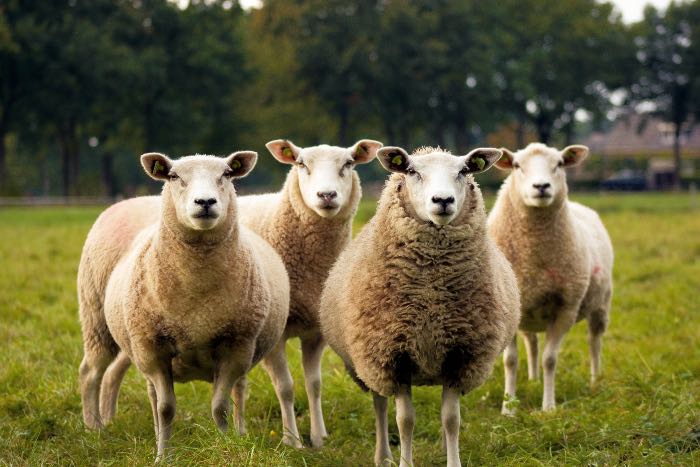
As I have noted before, this week’s gospel has us go back in time. To the time before the Passion, Crucifixion, and Easter. To the time before they even make it to Jerusalem.
And what we find is an odd moment of teaching. Jesus talks about the good shepherd and then also talks about himself as a gate.
These metaphors are fairly straightforward and easy to connect with. But they can be a bit puzzling in their context and even more puzzling in Easter. Perhaps making more sense as we tend to feel better about Jesus as a shepherd than a gate.
At the same time, we’re given a whole other thing.
We also read in Acts 2 about communal living.
Which, in the individualistic West is a bit…awkward.
Perhaps it isn’t a full-throated endorsement of communism. But it is certainly far closer to that than our experience today with late-stage capitalism.
And seeing as it isn’t in the gospel, but in another lectionary reading, we can just all pretend it doesn’t exist.
The irony, however, is that for many of us, such a reading is actually easier to preach about than this gospel passage. We’d rather talk about working together and building community. We’d find the encouraging bits for our people and then help them deal with the troubling parts.
In this way, Acts 2 really is easier for the preacher than John 10. At least for the preacher who doesn’t take the Jesus=Good Shepherd-so-we’re-all-safe route.
The real challenge is in John 10.
There are two ways I find John 10 challenging:
- The challenge of seeing Jesus and not leaders as the shepherd of sheep.
- The exclusionary character of protecting good people from evil.
Both of these are examples of stretching the gospel in ways that seem to change what Jesus is saying.
1. Shepherds
It is common in the church to refer to Jesus as the Good Shepherd. It is also common to turn this into a leadership model. Particularly when we think of priests and pastors as shepherds of the flock.
This story, however, isn’t about leadership. It’s about hearing the shepherd’s voice when we can’t see him.
It isn’t about what makes them good, but that their’s is a voice we can hear.
2. The Gate
The image of the gate seems to both support and conflict with the shepherd image. At the very least, it complicates it and takes it a new direction.
And then the talk of thieves and bandits put our minds at high alert anyway. When Jesus says it, our minds turn, not only to the idea of good and bad, but to good people and bad people. Which, is, you know, not the point.
It is really tempting to turn this all into a conversation about good and evil. Something many people of faith make everything into.
Jesus, however, doesn’t say this is good and this is bad. It sounds much more like protection than separation. He says that thieves and bandits try to get in, but they can’t. Jesus is blocking the way.
But you, the people hearing my voice, are safe from them.
Comfort rather than absolutes
These teachings comfort more than they express an absolute metaphysical truth.
This isn’t about how the world is constructed or an excuse to demonize certain people. It isn’t an expectation for leaders to have hearable voices or for us to define people as bad. All of this is distraction from Jesus.
What is Jesus saying?
When you’re blind, you can hear me. Lost, you can find the way. Separated from the flock, I can find you. When evil wants to claim you, I’ll protect you.
You are good. Safe.
And the dream God has promised to make of this world? You can get in. Jesus wouldn’t leave you behind.
Now, we, on the other hand, aren’t as reliable.
